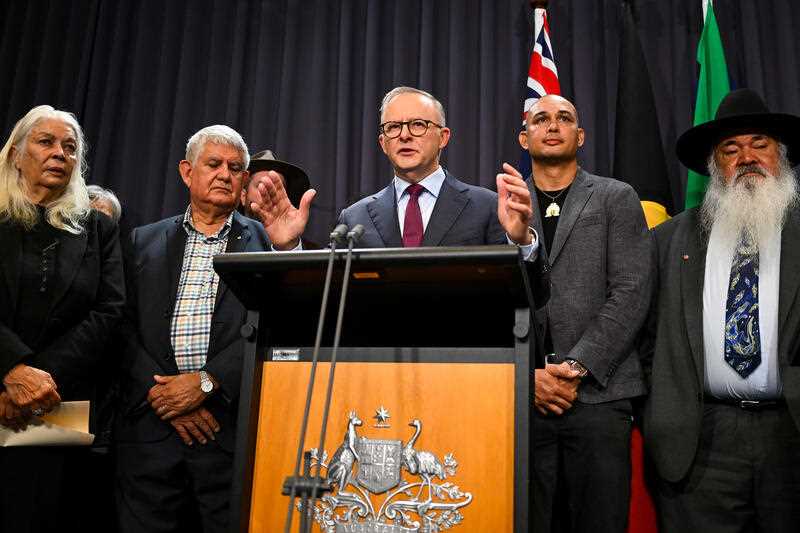A constitutional law expert explains the Voice referendum question

The Albanese government has now released the formal wording of the proposed referendum it will introduce into parliament.
It had earlier released a draft proposed amendment at the Garma Festival last year, which was intended to start a debate on the wording. Since then, this wording has been the subject of intense discussion and debate in the Referendum Working Group, comprised of Indigenous representatives, which has been advising the government.
It has also been scrutinised by the Constitutional Expert Group, which has provided legal advice in response to questions raised by the Referendum Working Group.
Many other Australians have raised ideas and concerns in the media and in communications with the government, which have been the subject of analysis and deliberation.

What do the words say?
The wording of the proposed amendment will be as follows:
Chapter IX – Recognition of Aboriginal and Torres Strait Islander Peoples
129 Aboriginal and Torres Strait Islander Voice
In recognition of Aboriginal and Torres Strait Islander peoples as the First Peoples of Australia:
(1) There shall be a body to be called the Aboriginal and Torres Strait Islander Voice;
(2) The Aboriginal and Torres Strait Islander Voice may make representations to the Parliament and the Executive Government of the Commonwealth on matters relating to Aboriginal and Torres Strait Islander peoples;
(3) The Parliament shall, subject to this Constitution, have power to make laws with respect to matters relating to the Aboriginal and Torres Strait Islander Voice, including its composition, functions, powers and procedures.
What is new?
First, it is now clear this amendment will be placed in its own separate chapter at the end of the Constitution in a new section 129.
The title of the chapter makes clear it is directed at the “recognition” of Aboriginal and Torres Strait Islander peoples in the Constitution.
This recognition then flows through to some introductory words which form a preamble at the beginning of the section. These words provide “recognition” of Aboriginal and Torres Strait Islander peoples as the “First Peoples of Australia”.
The terminology used is careful. It avoids the use of “First Nations”, which is politically more contentious and might have given rise to implications drawn from the term “Nation”.
The description “Aboriginal and Torres Strait Islander peoples” is long-standing and well-accepted, and the statement that they were the First Peoples of Australia is one of fact and recognition.
The rest of the proposed amendment remains the same except for a minor alteration of words at the end of sub-section (3).
Importantly, the guaranteed ability of the Voice to make representations to the executive government remains.
However, concerns about this have been addressed by the alteration to sub-section (3).
The concern that had been raised was the High Court might draw an implication from sub-section (2) the representations by the Voice must be considered by government decision-makers before they can validly make a decision, potentially resulting in litigation and the delay of decision-making.
While this concern had little to no substance, there was a suggestion some words should be added to the end of sub-section (3) to make it abundantly clear it was a matter for parliament to decide what the legal effects of the Voice’s representations would be.
Parliament could make the decision that in some cases decision-makers would be obliged to consider representations first, but there would be no such obligation in relation to other types of decisions.
This has now been accommodated by a compromise set of words added to the end of sub-section (3).
These words say parliament can make laws with respect to “to matters relating to the Aboriginal and Torres Strait Islander Voice, including its composition, functions, powers and procedures.”
The words “relating to” and “including” broaden the scope of this power.
They are intended to permit parliament to legislate about the effect of the Voice’s representations, so it is a matter for parliament to decide whether the representations of the Voice must be considered by decision-makers when making administrative decisions.
They are also intended to permit parliament to extend the powers and functions of the Voice as and when needed in the future.
The question on the ballot
The ballot paper never sets out the whole constitutional amendment, as in many cases, it would go for pages.
Instead, voters are asked to approve the proposed law, as it is described in its long title.
So the question put on the ballot will be set out as follows:
A Proposed Law: to alter the Constitution to recognise the First Peoples of Australia by establishing an Aboriginal and Torres Strait Islander Voice.
Do you approve of this alteration?
Voters then write Yes or No.
What now?
The amendment bill is intended to be introduced next week. When it is introduced, a parliamentary committee will be set up to allow the public to make their own submissions about the amendment.
Anyone who has concerns can have their voice heard by the committee and it remains possible that the committee might recommend alterations to the wording.
After the committee reports, the amendment bill will be debated in June and if passed, it will go to a referendum between two and six months after its passage. It will then be a matter for the people to decide.
Anne Twomey, Professor emerita, University of Sydney
This article is republished from The Conversation under a Creative Commons license. Read the original article.








